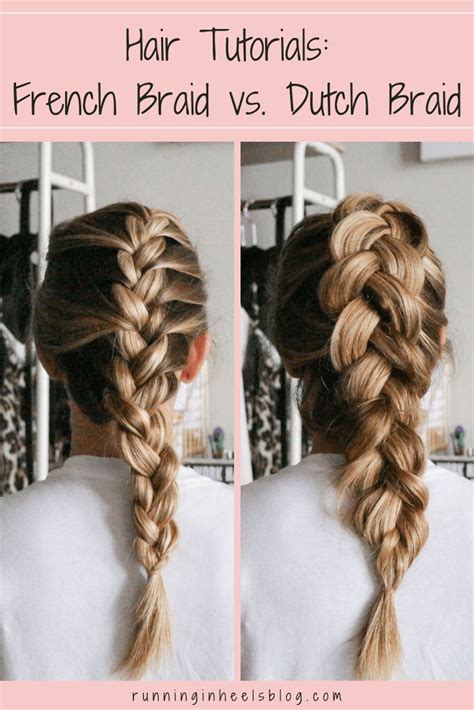From intricate updos to casual everyday hairstyles, French and Dutch braids are two timeless techniques that add elegance and versatility to any look. But what are the key differences between these braiding styles, and which one is best suited for your hair type and preferences? Let’s dive into a side-by-side comparison to help you make an informed decision.

1. Technique
French Braid:
- Involves creating a three-strand braid, where one strand is pulled over the other two.
- Strands are added from the sides as you braid down the hair.
- Results in a raised, intricate braid with an elegant appearance.
Dutch Braid:
- Also known as an “inside-out French braid.”
- Same three-strand base as French braids, but strands are pulled under instead of over.
- Creates a flatter, more voluminous braid with a more casual, textured look.
2. Appearance
French Braid:
- Raised, with visible strands on the outside.
- Gives an overall polished and sophisticated finish.
- Suitable for formal occasions and special events.
Dutch Braid:
- Flat, with strands hidden on the inside.
- Has a more textured, rustic appearance.
- Ideal for everyday wear and casual outings.
3. Complexity
French Braid:
- Requires some practice to master, but relatively straightforward once you get the hang of it.
- Suitable for beginners with a bit of patience.
Dutch Braid:
- Slightly more challenging than French braids due to the “under” technique.
- Recommended for those with some braiding experience.
4. Versatility
French Braid:
- Can be incorporated into various updos, such as buns, ponytails, and braids.
- Suitable for different hair lengths, although it works best on medium to long hair.
Dutch Braid:
- Also versatile, but more commonly used in casual, open hairstyles.
- Halos, crowns, and side braids are popular variations.
5. Hair Type
French Braid:
- Suitable for most hair types, including fine, medium, and thick.
- Tends to hold well in all hair textures.
Dutch Braid:
- Best suited for thicker or textured hair that can handle voluminous braids.
- May not hold as well in fine or slippery hair.
Common Mistakes to Avoid
French Braid:
- Pulling the strands too tightly, which can create tension and breakage.
- Not adding hair evenly from the sides, resulting in an uneven braid.
- Braiding too loosely, which can make the braid fall apart.
Dutch Braid:
- Pulling the strands under too forcefully, which can cause the hair to tangle.
- Not crossing the strands correctly, leading to a messy braid.
- Overbraiding, which can make the braid stiff and unnatural.
Pros and Cons
French Braid:
Pros:
- Elegant, sophisticated appearance
- Versatile for updos and downstyles
- Relatively easy to learn
Cons:
- Can be time-consuming to create
- May not hold well in fine hair
- Can cause tension if braided too tightly
Dutch Braid:
Pros:
- Casual, textured appearance
- More voluminous and eye-catching
- Less likely to slip out in thicker hair
Cons:
- Slightly more challenging to master
- May not be suitable for all hair types
- Can look messy if not done correctly
New Applications for French and Dutch Braids
Braiding Enthusiasts:
- Experiment with different braid variations, such as fishtail braids, Celtic knots, and crown braids.
- Create intricate hair sculptures and designs using multiple braids.
- Incorporate beads, ribbons, or hair accessories into braids for added embellishment.
Fashion Designers:
- Use braids as decorative elements in clothing, accessories, and textiles.
- Create innovative braided patterns and motifs for clothing and fabrics.
- Utilize braids in wearable art installations and fashion shows.
Hair Stylists:
- Offer specialized braiding services for weddings, proms, and special occasions.
- Create unique and personalized braid designs based on client preferences and hair types.
- Utilize braids to enhance the beauty and versatility of different hairstyles.
Conclusion
Whether you prefer the elegant sophistication of a French braid or the casual charm of a Dutch braid, both techniques offer endless possibilities for creating beautiful and versatile hairstyles. By understanding the key differences between the two styles, you can choose the one that best suits your hair type, style preferences, and aesthetic goals. Embrace the art of braiding and unlock the endless hair magic that awaits you!
